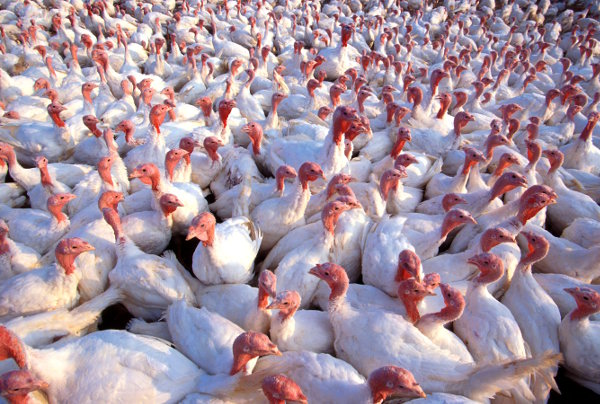Percentages Of Quantities
Before viewing this page, it would be helpful to learn Introductory Percentages.
Apart from basic arithmetic calculations like adding and multiplying, calculating percentages of quantities is one of the most common calculations that is done in real life. Everyday examples include:
- Bank interest on savings
- Bank interest on loans and credit cards
- Discounts
- Profits
When calculating percentages of quantities, it is important to remember that:
- "Per" means "divide"
- "Cent" means "100"
- "Of" means "multiply"
Example One - Fat in Sausages

Approximately 20% of the ground beef used to make sausages is fat. If a sausage has a mass of 60 grams, how much is fat?
Answer:
Fat = 20% of 60 grams
| = | 20 | × 60 |
| 100 |
= 12 grams fat
Example Two - Fuel from Waste

When biomass (e.g. food, plastic and farm waste) is quickly heated at 500° Centigrade for a few minutes in the absence of oxygen (in a process called pyrolysis), it makes a fuel similar to diesel. The mass of the original waste reduces to 60% during the heating process. If 1000 kg of turkey farm waste (i.e. feathers and excreta) is pyrolyzed, what is the mass of bio-fuel that is made?
Answer:
Fuel mass = 60% of 1000 kg
| = | 60 | × 1000 |
| 100 |
= 600 kg fuel
Did You Know That...?
Pyrolysis is super-heating of an organic compound (material containing carbon) for a short time period without oxygen. It has been used in a variety of ways as follows:
- Thomas Edison used pyrolysis to make a carbon filament from bamboo in the first electric light bulb. He later used a metal filament.
- Plastic bags have successfully been pyrolyzed to make a fuel similar to diesel.
- Carbon fibre used in yacht sails is pyrolyzed from a polymer called polyacrylonitrile.
Example Three - Cybercrime
Cyber-crime is data stealing such as corporate financial information and personal credit card details. According to an Anti-Phishing Working Group linking more than 2000 companies and government departments worldwide, there were approximately 250 million incidents of cyber-crime in 2010. This increased by 18% in 2011. What was the estimated number of cyber-crime incidents in 2011?
Answer:
Increase from 2010 to 2011
= 18% of 250 000 000
| = | 18 | × 250 000 000 |
| 100 |
= 45 000 000 more crimes
Number of cyber-crimes in 2011
= 250 million + 45 million
= 295 million cyber-crimes
Example Four - Fuel Saving
NASA has been trying to reduce the fuel consumption of its large rockets. Two companies, GASless and jetSAVE have designed two separate fuel-saving devices. The GASless invention will save 40% of fuel and jetSAVE's gadget will save 60% of fuel. If they are coupled together in the same rocket, will they save 100% of fuel?
Answer:
Assume the original fuel tank contains 100 litres of fuel. Assume that the GASless device is connected first and the jetSAVE device works second.
GASless fuel saving = 40% of 100 litres
= 40 litres
Fuel left after GASless device = 100 – 40
= 60 litres
jetSAVE fuel saving = 60% of 60 litres
= 36 litres
Fuel left after both devices = 60 – 36
= 24 litres
Fuel saved altogether = 100 – 24
= 76 litres
Percentage of fuel saved = (76 ÷ 100) × 100
= 76%
No. Together, they will save only 76% of fuel.
Question - Brazil's Growing Economy
Brazil is the 7th fastest growing economy in the world and is improving by 7.5% each year. If its wealth per capita (for every person) is about $15000, what will its wealth per capita be in one year's time?
Answer
$16125
Did You Know That...?
According to the World Bank in 2010, the growth rate per capita of the top world countries is as follows:
- USA - 3.5%
- China - 6.4%
- Japan - 0.3%
- Germany - 3.6%
- France - 1.6%
- United Kingdom - 0.6%
- Brazil - 7.5%

| 
| 
|